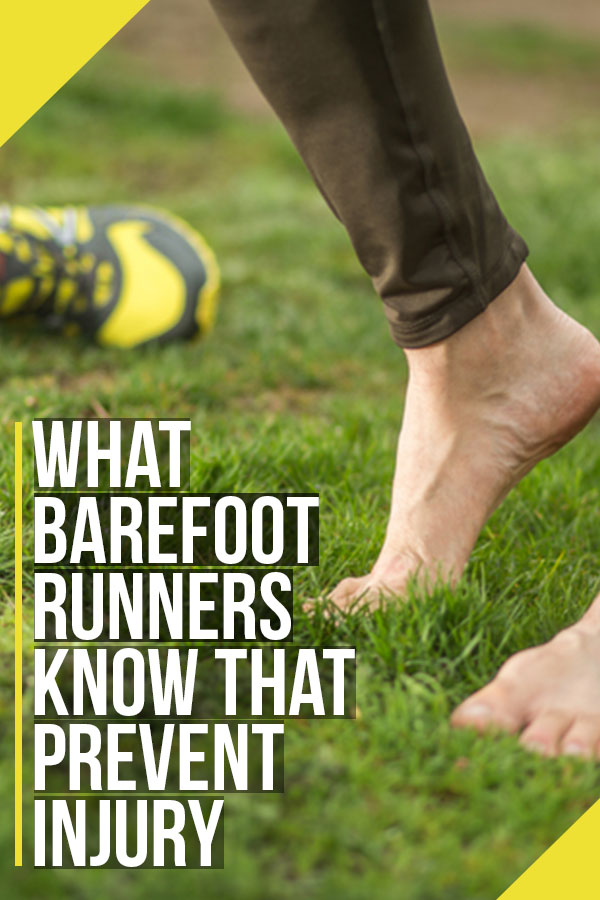As a running coach, I admit to never being terribly excited about the barefoot running trend that ran wild in the wake of the incredible book Born to Run. But, as always, I am open to learning, changing and watching the data. In the years since, I have found there are some barefoot running benefits when used correctly.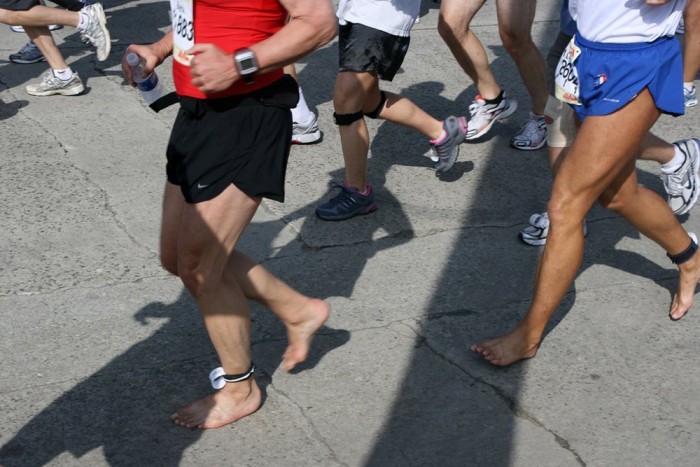 How often do you think about your feet {besides lusting after great new kicks}? Or the important role they play in injury free running?
How often do you think about your feet {besides lusting after great new kicks}? Or the important role they play in injury free running?
There are 26 bones connected through 33 joints in the human foot.
Of greatest importance: the big toe!
It provides balance, foot stability and explosive power for your running stride. Proponents of barefoot running point to this as one of the major benefits of letting our feet be free! Gaining foot strength can improve your entire stride, which increases speed and reduces injury.
While I never found myself interested in going entirely unshod {ouch glass, eww city streets}, barefoot running can provide us with tools and techniques to get stronger and stay injury free.
How Often to Run Barefoot?
Let’s start by saying, I will not be ditching my running shoes and I’m not propose that you should either!
Rather, where I have seen some max results are for runners spending time doing running drills or some quick running strides barefoot on grass or the turf of a field.
- Try doing your dynamic warm up barefoot, all those small muscles will be forced to work and, but not be overworked
- Include some post run barefoot strides on grass, to work on full range of motion in foot and ankle
- Walk around your house and yard barefoot
- Roll your foot over a tennis ball or PT ball each day to stretch the muscles
- Practice moving your big toe without moving other toes while you watch Tv
- Single leg balance moves in your strength workout (with bare feet) will also help to strengthen the hips and core, reducing the need for your feet to absorb the impact
7 Benefits of Barefoot Running
Once again a reminder, I’m talking about some time barefoot, not all the time.
Why? In a review of over 27 studies about the proclaimed benefits of going unshod for ALL runs, this was the conclusion “Because of lack of high-quality evidence, no definitive conclusions can be drawn regarding specific risks or benefits to running barefoot, shod, or in minimalist shoes.”
The American Podiatric Medical Association has also said research just isn’t strong enough to make a blanket recommendation.
And as a coach, I have seen a lot of injuries occur when people suddenly forgo cushion and protection. There are in fact studies showing a reduction in injuries with the new max cushioned running shoes.
So…as always we have folks on both sides of the argument.
#1 Learning to Land Softly
If you can hear your feet hitting the ground, you’re landing with too much force.
Your foot should only connect with the ground for a few seconds on each stride.
Practice running with a metronome to increase your pace to 180 steps per minute which will decrease time on the ground and if it sounds like the Hulk is crashing through the streets when you run, start repeating the mantra “light and quick”.
#2 Strengthen Your Feet
We spend a lot of time talking about lunges, calf raises and squats to strengthen our hips and glutes. Yet the entire process of running relies on feet that can carry us for miles!
The act of foot-to-ground contact is going to force all of those neglected muscles to engage. It’s going to allow you to have an unrestricted range of motion, which is all going to build some strength.
But NOT as much as doing specific resistance exercises. Here are some of my favorite foot strengthening exercises for runners.
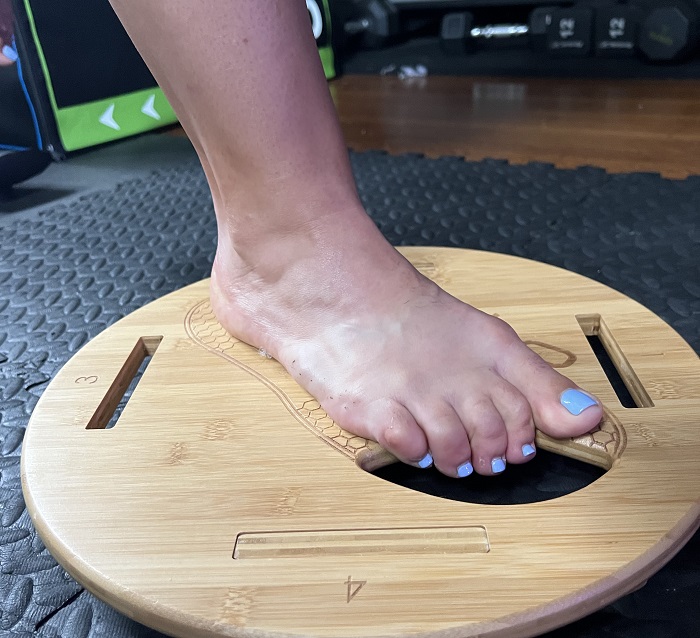
Coach Eric Orton likes to have his athletes do a 20-30 very easy run on turf when building mileage and working on keeping easy days easy. He believes this further strengthens their feet, making them more resilient and better at trail running.
Going for longer than that duration can lead to injury as most runners simply do not have enough calf, ankle and foot strength to maintain good form. During your barefoot time, you’ll notice how suddenly you have no arch support!
For runners with flat feet, spending some light time barefoot could force you to build some strength because the foot isn’t supported. But too much time, and injury increases.
He says running in Vibrams also counts if you don’t have turf nearby. Which I appreciate because barefoot purists would have you believe that it doesn’t count.
#3 Better Big Toe Utilization
Did you know that your big toe provides a lot of the power in your stride?
Your big toe initiates the drive phase of your gait by pushing off, it helps shift weight forward to create momentum. It’s also part of stabilizing the foot’s arch to manage pronation.
Coach Laura on my team SWEARS by toe yoga, especially for all of her ultra running athletes. But it benefits all of us who want to get the most power from our stride.
Going barefoot means your toes aren’t squished in to a tight toe box and thus you lose control of the big toe. Of course, you can also get these benefits by choosing a wide toe box running shoe.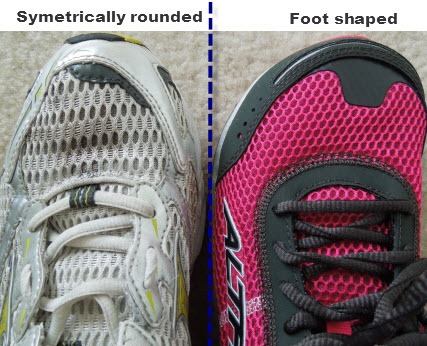
#4 Improve Landing Under Your Body, Not Overstriding
Many runners become confused after hearing talk about heel striking, forefoot, mid-foot…where to land?! The answer is fairly simple. When you start running think about landing with a relaxed foot that is parallel to the ground or slightly toward the toes.
Most importantly, this means you will need to land under your body.
By not landing in front of your body, you may still heel strike, but without the adverse effects and it allows for the slight forward lean which is ideal posture. In either case you will roll forward and, yes once again, rely on that big toe for the push off.
Learn more about forefoot running >>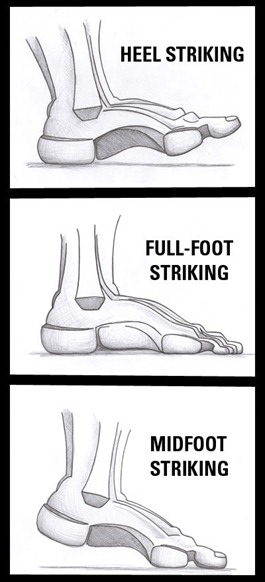
#5 Connection to Earth
A number of recent studies have shown that simply going barefoot can help give you a sense of connection and grounding, which has a healing effect.
Maybe just a few moments of feeling that soft green Earth will also remind you of being kid again when running was nothing more than joy.
For us non-barefoot runners, the practice of simply taking your shoes off to walk around the grass or stand for a bit is known as grounding. Lots of research on it’s benefits, so why not let your feet free for a bit.
#7 Disruption of Patterns
One of the biggest benefits from transitioning to barefoot running is quite simply the disruption of old habits. During the transition, runners have to be conscious of their form, slow down and in general reconsider their training. Most of us rarely take the time for a full reboot, we simply lace up and go.
After your next race, consider spending a few weeks doing nothing but strength work and then as you ease back in to running use that time to focus on your stride and developing all the habits you’ve put off like a dynamic warm up, hip stretches and post-run fueling.
Does Running Barefoot Strengthen Legs?
Yes, but again not as much as a complete strength routine or following specific movements from a PT.
There have been many claims that it will help Plantar Fasciitis or Achilles tendonitis, but there is no evidence to support this. And for some runners, these issues are made worse by asking the tendons and muscles to work so much harder.
Minimalist running is absolutely going to force your calves to work harder and toughen up the soles of your feet!
Are Barefoot Shoes and Zero Drop The Same?
No, this is actually a very important distinction.
Barefoot shoes, like the well known Vibram, may have some rubber on the bottom for foot protection, but that’s it.
Meanwhile, zero-drop shoes can have plenty of cushion! Altra has made a whole line up of zero drop shoes that are incredibly comfortable from my testing.
Again, even with these shoes you need to transition in to them slowly from a higher heel drop. It’s another thing that each runner has to test for themselves. I know some who swear it’s changed their form and eliminated injuries. Others would say the opposite.
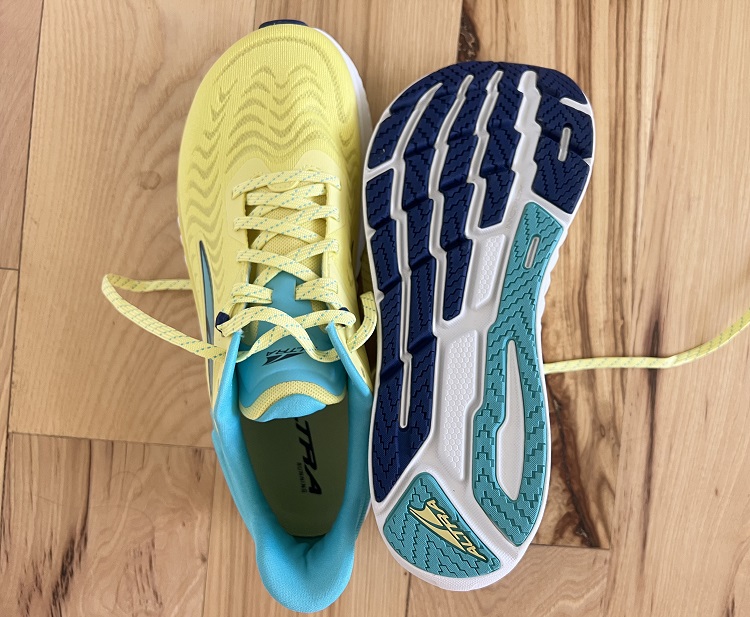
Should you run barefoot?
I say do what works for you and be open to testing out new things…just know it’s not a panacea. And it’s not a zero to 100% type of decision.
If you’re experiencing frequent injuries then it’s time to make a change. That could involve seeing a physical therapist to evaluate your stride, implementing more strengthening exercises or testing out barefoot running. There is no 100% right or wrong answer here, but worth a try!
Barefoot Running Book
If you’re looking for a great book to dive more in to barefoot running, here’s one that I found extremely helpful. It’s called Run Barefoot, Run Healthy and here are a few of the reasons I liked it.
He does a great job of even detailing why Vibram’s are not the equivalent of barefoot running and how they could still lead to injury.
Again, not my take on things, but if you want someone who is all in on barefoot running, this is it.
”Running barefoot reduces impact on your body.” If you suffer from chronic injuries then barefoot running could be one of the next things that you try. By default you will correct your stride because it’s going to hurt to slam down on your heel repeatedly.
Personally I’m still more in favor of just going to a shoe with a lower heel drop.
All right, I hope this helped give you some reasons to shuck those shoes…for a limited time each day or each workout. Barefoot running benefits are there when incorporated correctly.
